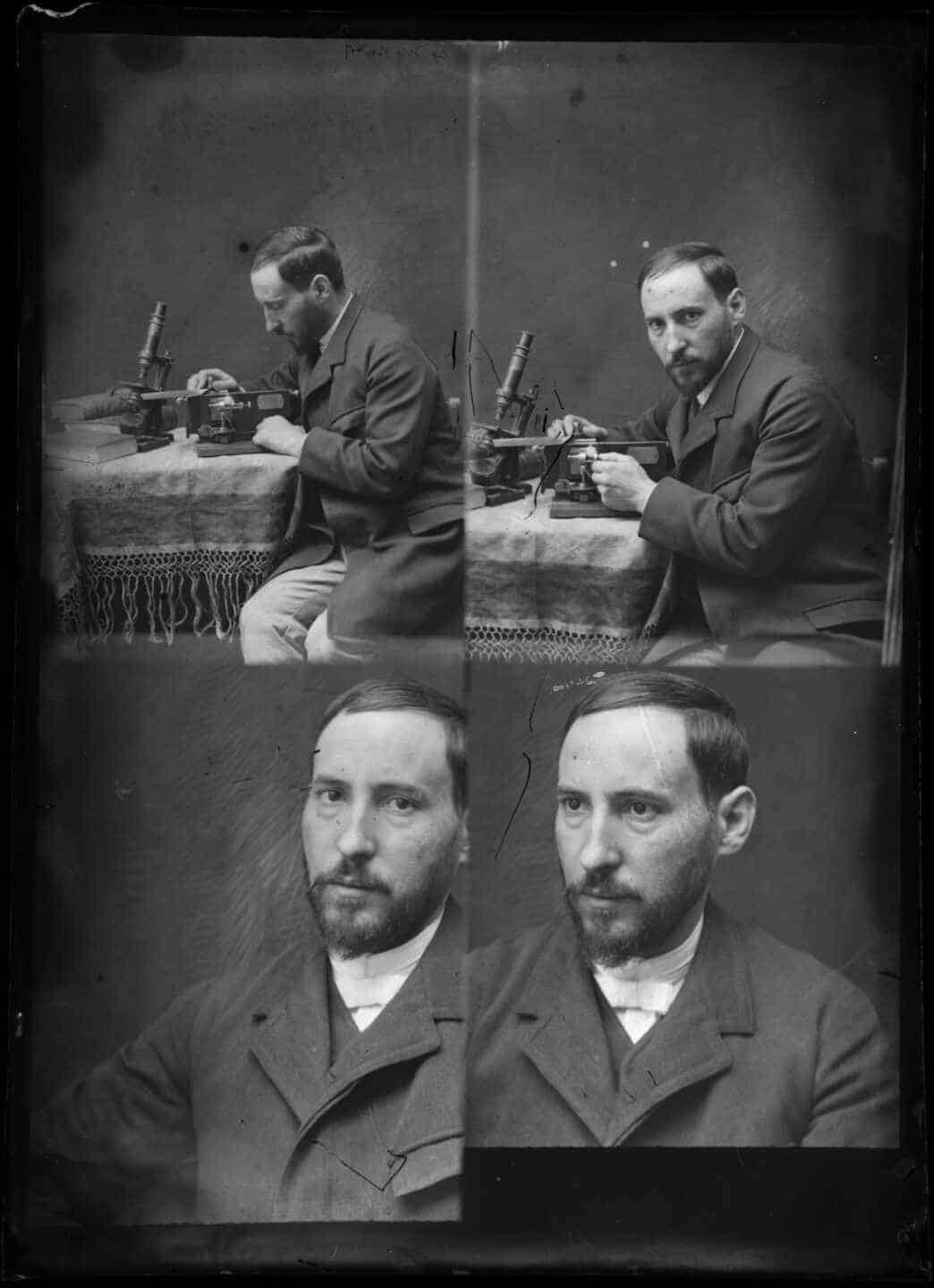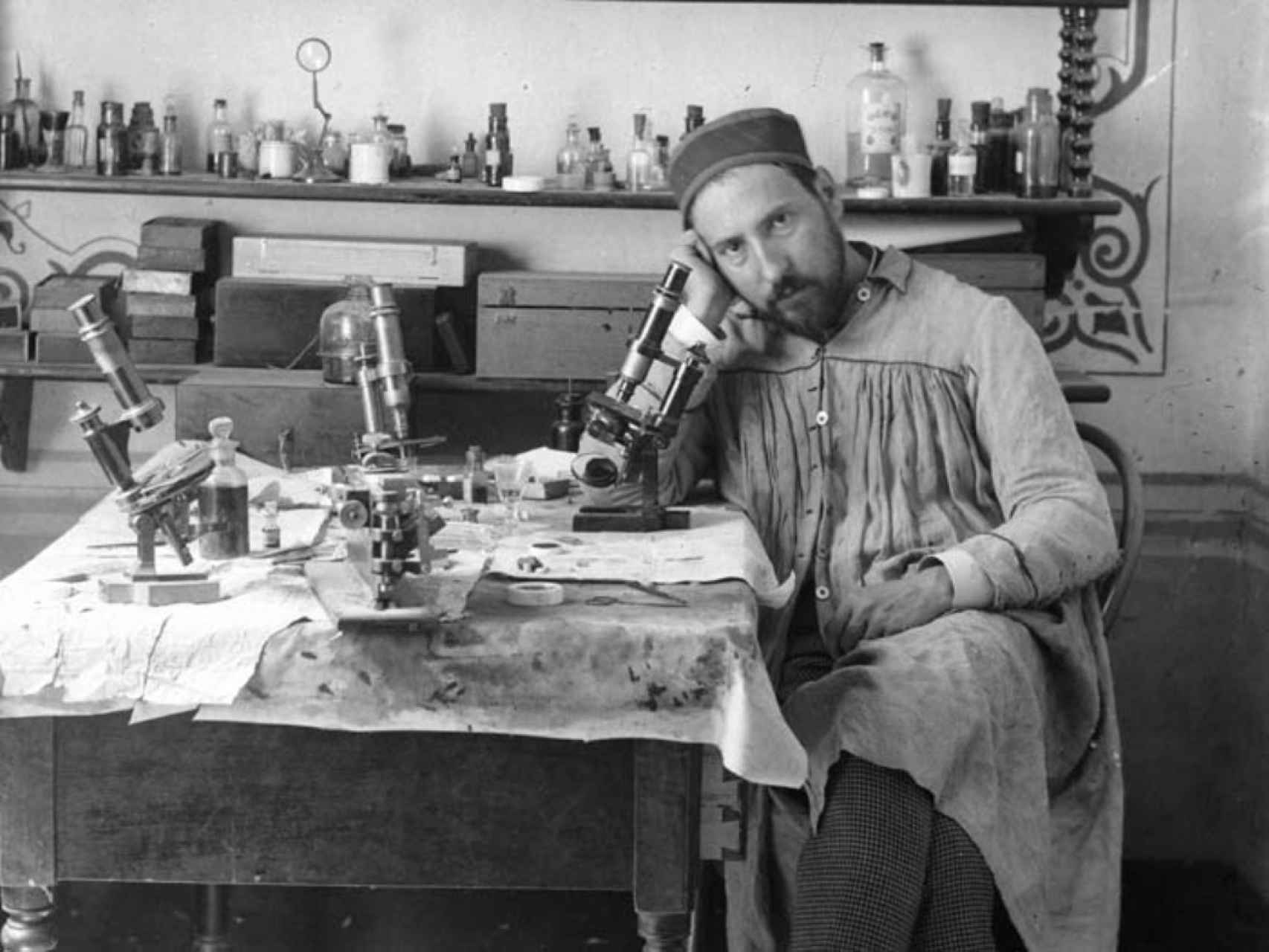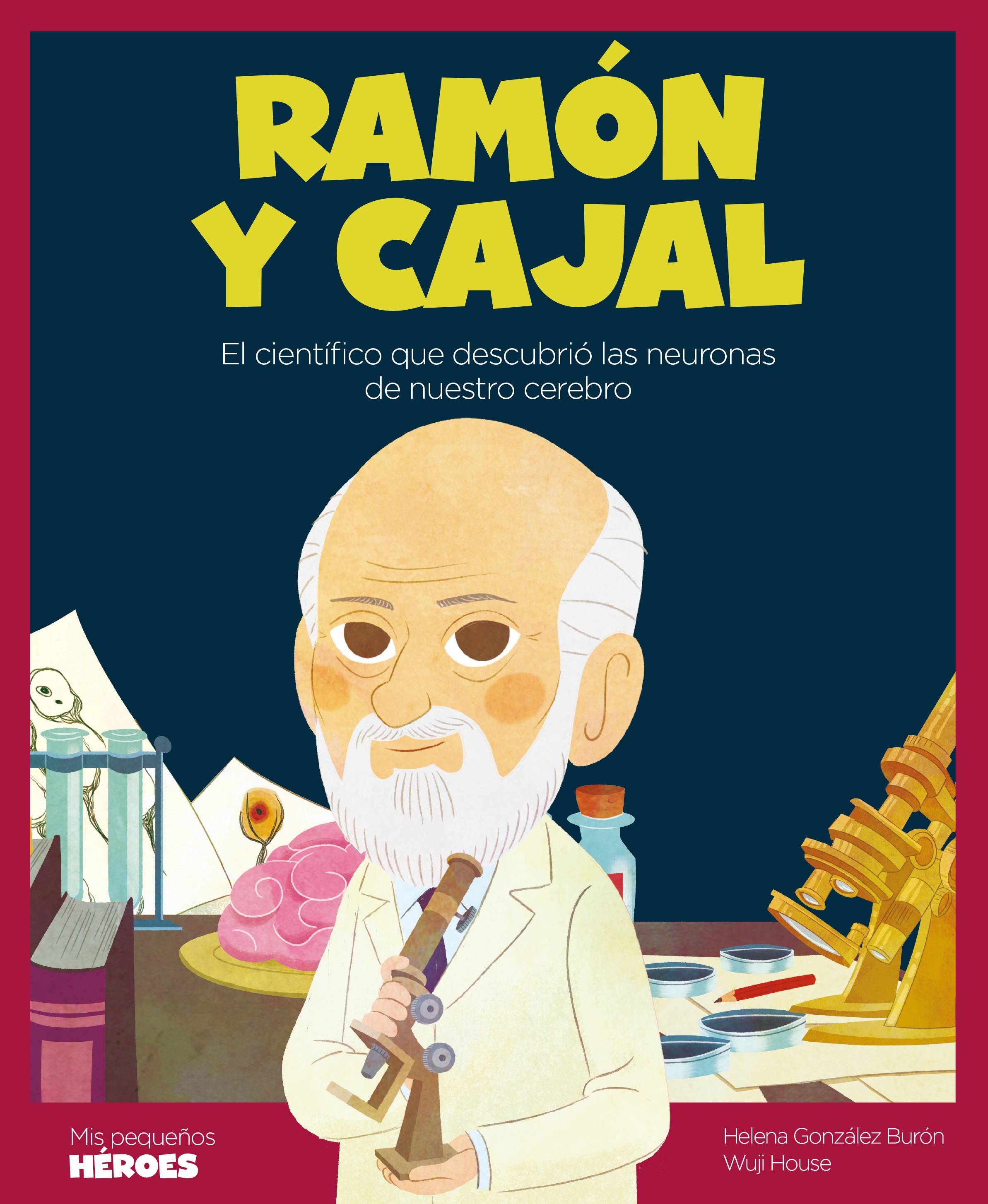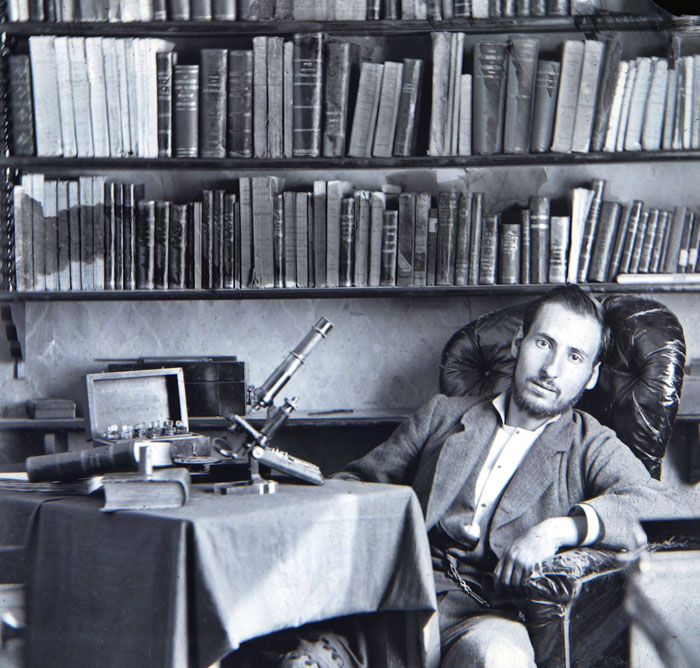
Ramón y Cajal los secretos de un genio América 2.1
The pencil and ink depictions are not fantastical dreamscapes, but the brainchildren of Santiago Ramón y Cajal (1852-1934), the father of neuroscience and once an aspiring artist. Armed with a.

Ramón y Cajal, Nobel y pionero de la fotografía
En Queen San Modesto, ubicado entre el barrio de Begoña y el Hospital Ramón y Cajal, encontrarás dos barras, una clásica de madera y otra de aire funky. Contamos con un aforo para 250 personas en el interior y una terraza que encantara a los más callejeros. QUEEN San Modesto Coctelería

Biografía de Santiago Ramón y Cajal Su vida al completo
Biographical. Santiago Ramón y Cajal was born on May 1, 1852, at Petilla de Aragón, Spain. As a boy he was apprenticed first to a barber and then to a cobbler. He himself wished to be an artist - his gift for draughtsmanship is evident in his published works. His father, however, who was Professor of Applied Anatomy in the University of.

Santiago Ramón y Cajal. El padre de la neurociencia moderna Albert Mesa Rey Adelante España
Camillo Golgi, who clung to the continuous-web theory, abused his Nobel acceptance speech to attack his younger co-laureate, Santiago Ramón y Cajal. Cajal behaved himself at the ceremony, but.

Ramón y Cajal, el joven cachas, pendenciero y carcelario que ganó un Nobel
Santiago Ramón y Cajal, (born May 1, 1852, Petilla de Aragón, Spain—died Oct. 17, 1934, Madrid), Spanish histologist who (with Camillo Golgi) received the 1906 Nobel Prize for Physiology or Medicine for establishing the neuron, or nerve cell, as the basic unit of nervous structure.This finding was instrumental in the recognition of the neuron's fundamental role in nervous function and in.

Santiago Ramon y Cajal, histologist Stock Image H418/0213 Science Photo Library
Born in Navarra, the son of a doctor, Cajal was a rebellious artistic child, with an innate distrust of authority and an obsessive-compulsive proclivity. At 8, according to the catalog, he drew.

mis pequeños héroes, els meus petits herois, biografías para niños
Santiago Ramón y Cajal 1 May 1852 - 18 October 1934) was a Spanish doctor. He shared the 1906 Nobel Prize in Physiology or Medicine with Camillo Golgi for their work on the anatomy of the nervous system. Ramón y Cajal worked on thin slices of brain tissue which were laid on microscope slides and stained with silver. The stain was invented.

Memoria gráfica de España. Santiago Ramón y Cajal
Santiago Ramón y Cajal ( Spanish: [sanˈtjaɣo raˈmon i kaˈxal]; 1 May 1852 - 17 October 1934) [1] [2] was a Spanish neuroscientist, pathologist, and histologist specializing in neuroanatomy and the central nervous system. He and Camillo Golgi received the Nobel Prize in Physiology or Medicine in 1906. [3]

La prodigiosa memoria histórica de Ramón y Cajal Agroicultura Perinquiets
In 1889, Ramón y Cajal took his slides to a scientific meeting in Germany. "He sets up a microscope and slide, and pulls over the big scientists of the day, and said, 'Look here, look what I.

Ramón y Cajal, el pionero de la fotografía en España que ganó un Nobel
Ramón y Cajal refinó la técnica de Golgi y, con los detalles obtenidos de las imágenes más nítidas, revolucionó la neurociencia. En 1906 él y Golgi compartieron el Premio Nobel.

Santiago Ramón y Cajal Artist and Nobel Prize Winning Scientist RobotSpaceBrain
May 1, 1852 - October 17, 1934. Santiago Ramón y Cajal. Courtesy of the Cajal Institute, Spanish National Research Council or CSIC©. Santiago Ramón y Cajal, a Spanish physician and scientist, was the first to describe the structure of the nervous system with exquisite precision.

Los vicios que obstaculizan el éxito, según el padre de la neurociencia Cultura Inquieta
Santiago Ramón y Cajal was born in May 1852 in the village of Petilla, in the region of Aragon in northeast Spain. His father was at that time the village surgeon (later on, in 1870, his father was appointed as Professor of Dissection at the University of Zaragoza).

Santiago Ramón y Cajal biografía del médico español más célebre
Abstract. Ramón y Cajal's studies in the field of neuroscience provoked a radical change in the course of its history. For this reason he is considered as the father of modern neuroscience. Some of his original preparations are housed at the Cajal Museum (Cajal Institute, CSIC, Madrid, Spain). In this article, we catalogue and analyse more.

Cajal y la hipnosis una visión desconocida del científico universal Lanza Digital Lanza Digital
Santiago Ramón y Cajal, "the father of modern neuroscience.". All images courtesy Cajal Legacy, Instituto Cajal (CSIC), Madrid. Fiction is, by definition, a world away from fact—but Santiago Ramón y Cajal, often heralded as "the father of modern neuroscience," used it to find objective truth. Cajal spent his days at the microscope.

Queen Letizia Visits Ramon Y Cajal Editorial Stock Photo Stock Image Shutterstock
Santiago Ramón y Cajal is often called the father of neuroscience. He won the Nobel Prize for Physiology/Medicine in 1906 for his theory that became known as the neuron doctrine. Early Life and Education Santiago Ramón y Cajal was born in Petilla de Aragón in northern Spain on May 1, 1852. His mother's name was

Santiago Ramón y Cajal y los errores. Lo peor no es cometer un error...
Santiago Ramón y Cajal. Ramón y Cajal, Santiago. Petilla de Aragón (Navarra), 1.V.1852 - Madrid, 17.X.1934. Médico dedicado a la investigación histológica del sistema nervioso. Hijo de un cirujano rural que con grandes esfuerzos llegó a conseguir el título de médico, la niñez de Cajal discurrió con penalidades en una serie de.